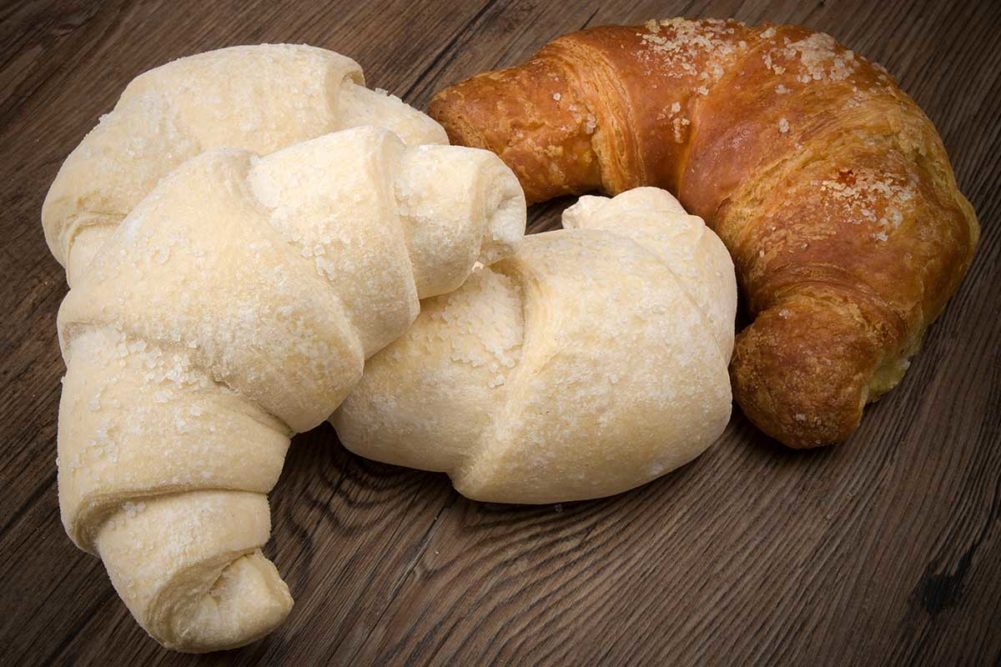The freezing process inflicts all kinds of challenges on dough: moisture, volume, texture, shelf life and more. All of these create variability. For bakers who are trying to deliver consistent quality every time, this is not ideal, especially in the context of how frozen doughs are often used.
“Storage temperature and the associated variability, and end-user errors related to retarding, proofing and baking as well as equipment calibration issues can all lead to inconsistencies in finished product quality,” said Mark Zielonka, technical sales, frozen and par-baked dough specialist, BreadPartners Inc. “Building tolerance into the frozen dough system can help alleviate many problems.”
He recommended that adding either SSL, DATEM or both to a frozen dough assists in smoothing the variability that can occur in these products. With the aid from these surfactants, end users can achieve the desired finished volume and crumb characteristics.
This isn’t all emulsifiers can do, however. Emulsifiers smooth out variability because there are many to choose from that each can address different challenges.
“Emulsifiers, whether chemical or physical, improve shelf life by preventing moisture and oil migration,” said Olivia Benton, food technologist, food systems, Ingredion. “Chemical emulsifiers, found in eggs, lecithin or gum acacia, for example, form an emulsion between polar and nonpolar, or immiscible, phases, which maintain crumb softness and intended texture after freezing. Hydrocolloids such as xanthan, guar and CMC are commonly used to retain moisture in baked goods and can support chemical emulsion stability by acting as a physical barrier to separation.”
[Related reading: Emulsifiers provide consistency in frozen dough]
Choosing the right emulsifier or combination of emulsifiers largely depends on the application and processes it will undergo. That can indicate whether bakers should work with crumb softeners, strengtheners or other ingredients.
“If strengthening is needed, then a strengthening emulsifier like DATEM would be a good choice,” said John Nedderson, senior application scientist, IFF. “If softening is needed, then a monoglyceride would be an option. In some baked goods multiple functions may be needed, which may lead to using multiple emulsifiers. Some emulsifiers may have more than one function so multiple emulsifiers may not be needed.”
At the end of the day, formulators must ask, what is being emulsified?
“Is it mainly oil, water or air that needs to be stabilized?” asked Kirsten Benneter, senior technologist, innovation, Ingredion Inc. “Additionally, understanding the correct addition point for the emulsifier based on the formulation process and emulsifier type.”
Some emulsifiers are forgiving and can be added at any point while others must be incorporated at a specific step to be activated correctly.
“Generally adding more emulsifier is beneficial, but there may come a point when too much emulsifier can change the characteristics of the product,” Mr. Nedderson explained. “A simple dose response trial is usually all that is needed to determine the right level.”
Frozen dough offers bakers and their customers an opportunity to circumvent the knowledge gap in the workforce. And the right emulsifiers can get in front of challenges with moisture migration and volume to deliver the end consumer a consistently high-quality baked good that tastes and feels fresh.
This article is an excerpt from the September 2021 issue of Baking & Snack. To read the entire feature on Emulsifiers, click here.






